Research on Application of Non-Isolated Three-Port Switching Boost Converter in Photovoltaic Power Generation System
Abstract
:1. Introduction
2. System Topology Circuit Analysis
2.1. Three-Port Switching Boost Converter Topology
2.2. Three-Port Switching Boost Converter Topology
2.3. TPC Power Flow Relationship
2.3.1. Working Status of TPC in DISO Mode
2.3.2. Working Status of TPC in SISO Mode
3. Three-Port Switching Boost Converter Control Strategy
4. Simulation and Experiment
4.1. Simulation Results
4.2. Experimental Results and Analysis
4.2.1. Three-Port Switching Boost Converter Power Flow Experiment
4.2.2. Maximum Power Point Tracking Experiment
5. Conclusions
Author Contributions
Funding
Conflicts of Interest
References
- Zhou, Z.; Xiong, F.; Huang, B.; Xu, C.; Jiao, R.; Liao, B.; Yin, Z.; Li, J. Game-theoretical Energy Management for Energy Internet with Big Data-based Renewable Power Forecasting. IEEE Access 2017, 5, 5731–5746. [Google Scholar] [CrossRef]
- Rahbar, K.; Chai, C.C.; Zhang, R. Energy Cooperation Optimization in Microgrids with Renewable Energy Integration. IEEE Trans. Smart Grid 2016, 9, 1482–1493. [Google Scholar] [CrossRef]
- Sher, H.A.; Murtaza, A.F.; Noman, A.; Addoweesh, K.E.; Al-Haddad, K.; Chiaberge, M. A New Sensorless Hybrid MPPT Algorithm Based on Fractional Short-Circuit Current Measurement and P&O MPPT. IEEE Trans. Sustain. Energy 2015, 6, 1426–1434. [Google Scholar]
- Dallago, E.; Liberale, A.; Miotti, D.; Venchi, G. Direct MPPT algorithm for PV sources with only voltage measurements. IEEE Trans. Power Electron. 2015, 30, 6742–6750. [Google Scholar] [CrossRef]
- Chen, Y.M.; Liao, C.Y. A PV Micro-inverter with PV Current Decoupling Strategy. IEEE Trans. Power Electron. 2016, 32, 6544–6557. [Google Scholar]
- Zhu, H.; Zhang, D.; Athab, H.S.; Wu, B.; Gu, Y. PV Isolated Three-Port Converter and Energy-Balancing Control Method for PV-Battery Power Supply Applications. IEEE Trans. Ind. Electron. 2015, 62, 3595–3606. [Google Scholar] [CrossRef]
- Chen, K.; Tian, S.; Cheng, Y.; Bai, L. An Improved MPPT Controller for Photovoltaic System under Partial Shading Condition. IEEE Trans. Sustain. Energy 2014, 5, 978–985. [Google Scholar] [CrossRef]
- Jiang, Y.; Qahouq, J.A.A.; Haskew, T.A. Adaptive Step Size with Adaptive-Perturbation-Frequency Digital MPPT Controller for a Single-Sensor Photovoltaic Solar System. IEEE Trans. Power Electron. 2013, 28, 3195–3205. [Google Scholar] [CrossRef]
- De Souza, A.C.; Melo, F.C.; Oliveira, T.L.; Tavares, C.E. Performance Analysis of the Computational Implementation of a Simplified PV Model and MPPT Algorithm. IEEE Lat. Am. Trans. 2016, 14, 792–798. [Google Scholar] [CrossRef]
- Mishra, P.P.; Fathy, H.K. Achieving Self-Balancing by Design in Photovoltaic Energy Storage Systems. IEEE Trans. Control Syst. Technol. 2018, 29, 1–14. [Google Scholar] [CrossRef]
- Chien, L.J.; Chen, C.C.; Chen, J.F.; Hsieh, Y.P. Novel Three-Port Converter With High-Voltage Gain. IEEE Trans. Power Electron. 2014, 29, 4693–4703. [Google Scholar] [CrossRef]
- Zhu, H.; Zhang, D.; Zhang, B.; Zhou, Z. A Nonisolated Three-Port DC–DC Converter and Three-Domain Control Method for PV-Battery Power Systems. IEEE Trans. Ind. Electron. 2015, 62, 4937–4947. [Google Scholar] [CrossRef]
- Zhao, J.; Iu, H.H.; Fernando, T.; An, L.; Lu, D.D. Design of a non-isolated single-switch three-port DC-DC converter for standalone PV-battery power system. In Proceedings of the 2015 IEEE International Symposium on Circuits and Systems (ISCAS), Lisbon, Portugal, 24–27 May 2015. [Google Scholar]
- Zeng, J.; Qiao, W.; Qu, L. Modeling and control of a three-port DC-DC converter for PV-battery systems. In Proceedings of the Applied Power Electronics Conference and Exposition (APEC), Charlotte, NC, USA, 15–19 March 2015; pp. 1768–1773. [Google Scholar]
- Wu, H.; Wang, J.; Liu, T.; Yang, T.; Xing, Y. Modified SVPWM Controlled Three-Port Three-Phase AC-DC Converters with Reduced Power Conversion Stages for Wide Voltage Range Applications. IEEE Trans. Power Electron. 2017, 33, 6672–6686. [Google Scholar] [CrossRef]
- Faraji, R.; Farzanehfard, H. Soft-switched Non-Isolated High Step-up Three-port DC-DC converter for Hybrid Energy Systems. IEEE Trans. Power Electron. 2018, 33, 10101–10111. [Google Scholar] [CrossRef]
- Wu, H.; Sun, K.; Ding, S.; Xing, Y. Topology Derivation of Nonisolated Three-Port DC-DC Converters from DIC and DOC. IEEE Trans. Power Electron. 2013, 28, 3297–3307. [Google Scholar] [CrossRef]
- Wu, H.; Wong, S.C.; Chi, K.T.; Chen, Q. Control and Modulation of Bidirectional Single-Phase AC–DC Three-Phase-Leg SPWM Converters with Active Power Decoupling and Minimal Storage Capacitance. IEEE Trans. Power Electron. 2016, 31, 4226–4240. [Google Scholar] [CrossRef]
- Lu, Y.; Sun, K.; Wu, H.; Dong, X.; Xing, Y. A Three-port Converter Based Distributed DC Grid-connected PV System with Autonomous Output Voltage-Sharing Control. IEEE Trans. Power Electron. 2018, 34, 325–339. [Google Scholar] [CrossRef]
- Su, G.J.; Tang, L. A Reduced-Part, Triple-Voltage DC–DC Converter for EV/HEV Power Management. IEEE Trans. Power Electron. 2009, 24, 2406–2410. [Google Scholar]
- Wu, H.; Zhang, J.; Qin, X.; Mu, T.; Xing, Y. Secondary-Side-Regulated Soft-Switching Full-Bridge Three-Port Converter Based on Bridgeless Boost Rectifier and Bidirectional Converter for Multiple Energy Interface. IEEE Trans. Power Electron. 2016, 31, 4847–4860. [Google Scholar] [CrossRef]
- Hu, Y.; Xiao, W.; Cao, W.; Ji, B.; Morrow, D.J. Three-Port DC–DC Converter for Stand-Alone Photovoltaic Systems. IEEE Trans. Power Electron. 2014, 30, 3068–3076. [Google Scholar] [CrossRef]
- Chen, Y.; Wen, G.; Peng, L.; Kang, Y.; Chen, J. A family of cost-efficient non-isaolated single-inductor three-port converters for low power stand-alone renewable power applications. In Proceedings of the 2013 Twenty-Eighth Annual IEEE Applied Power Electronics Conference and Exposition (APEC), Long Beach, CA, USA, 17–21 March 2013. [Google Scholar]
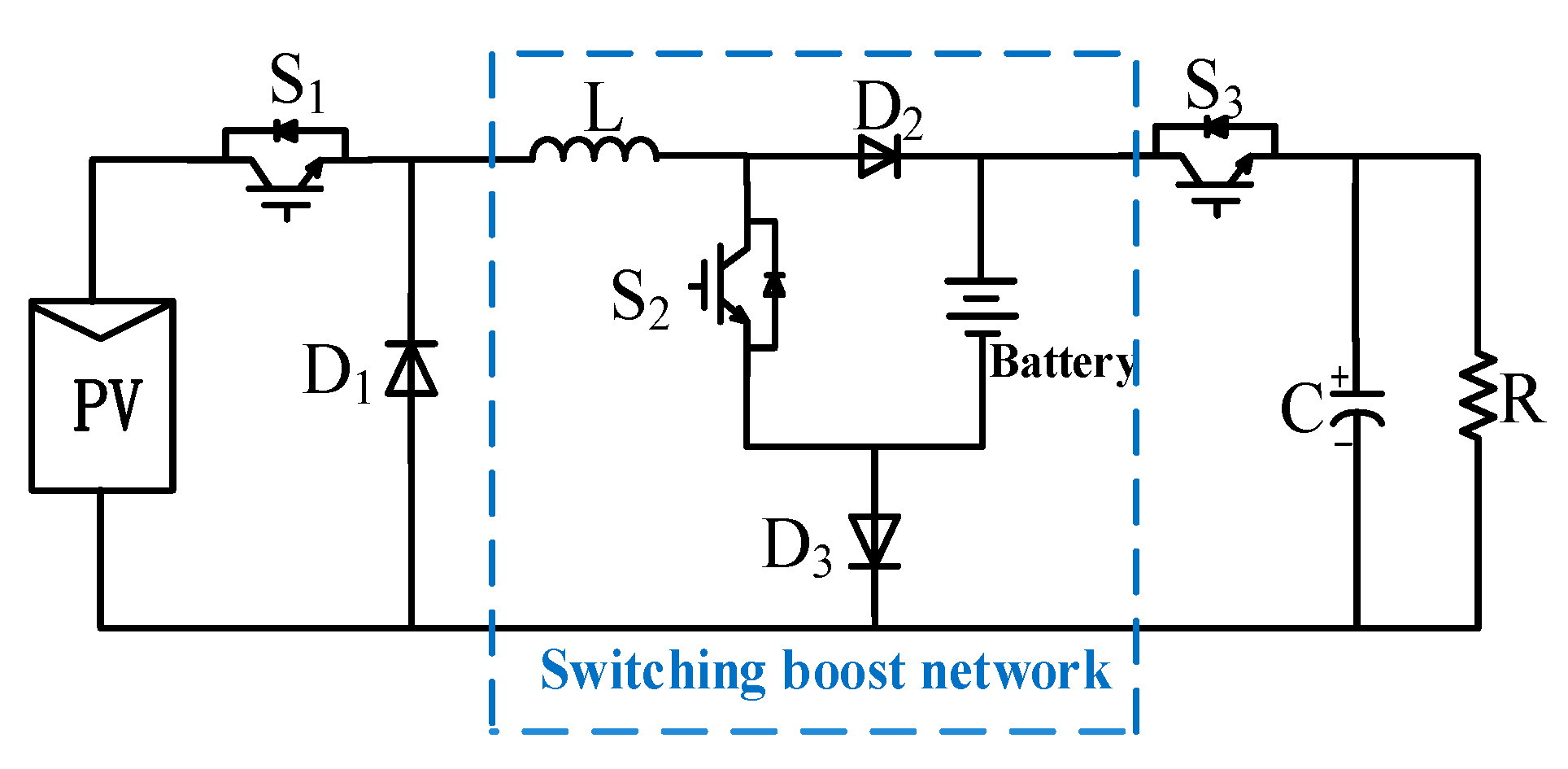
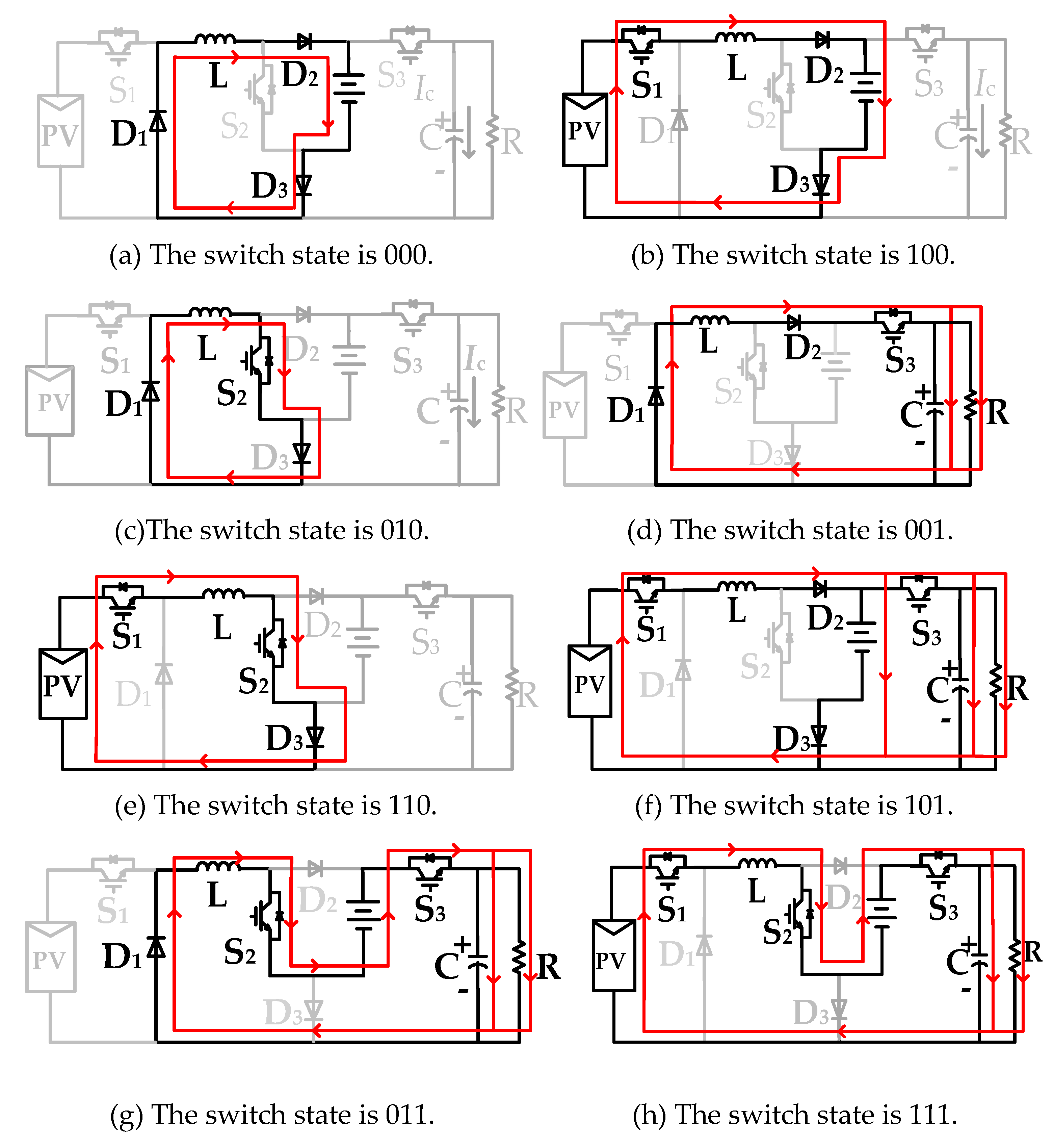
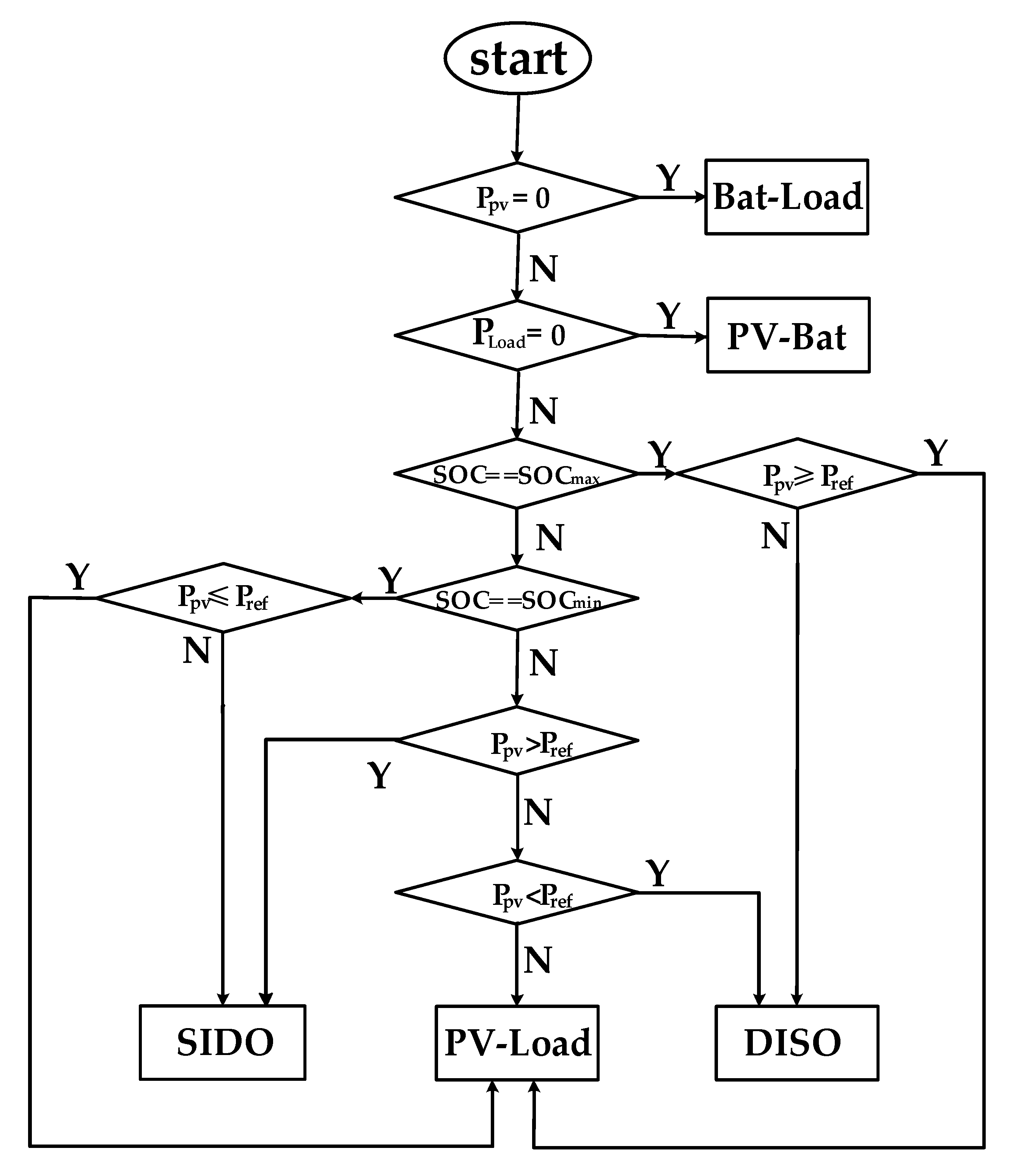
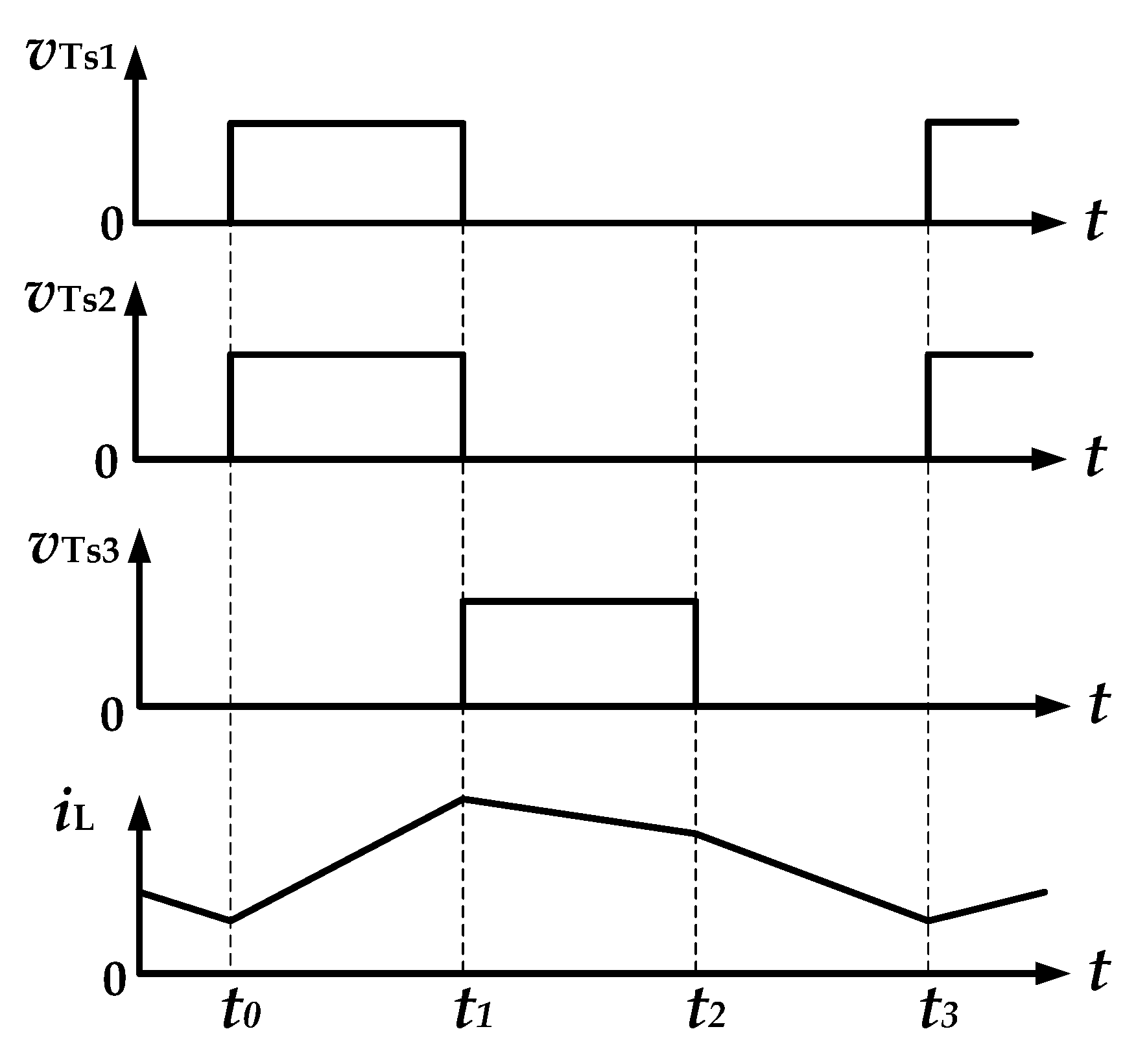
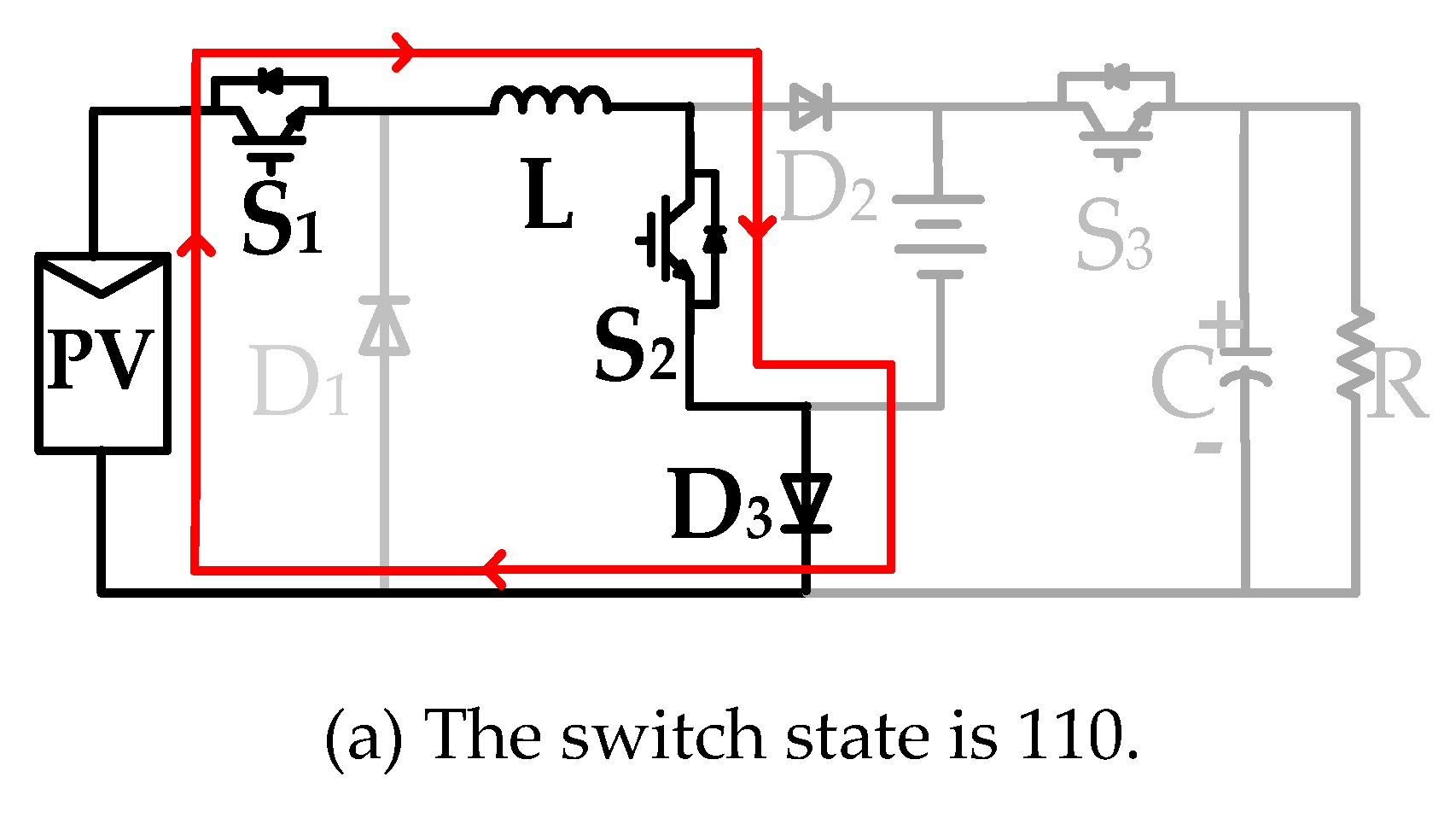
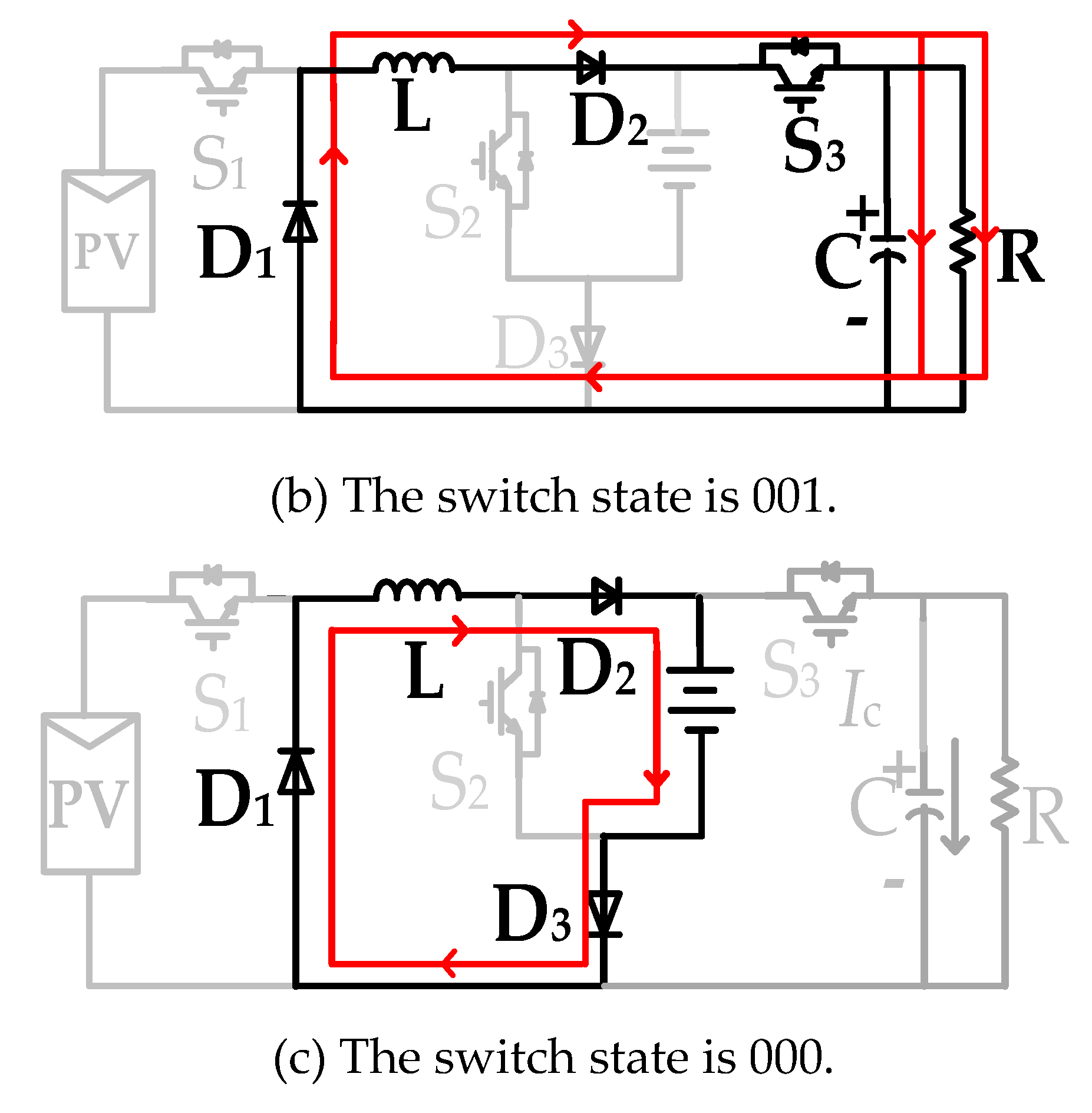
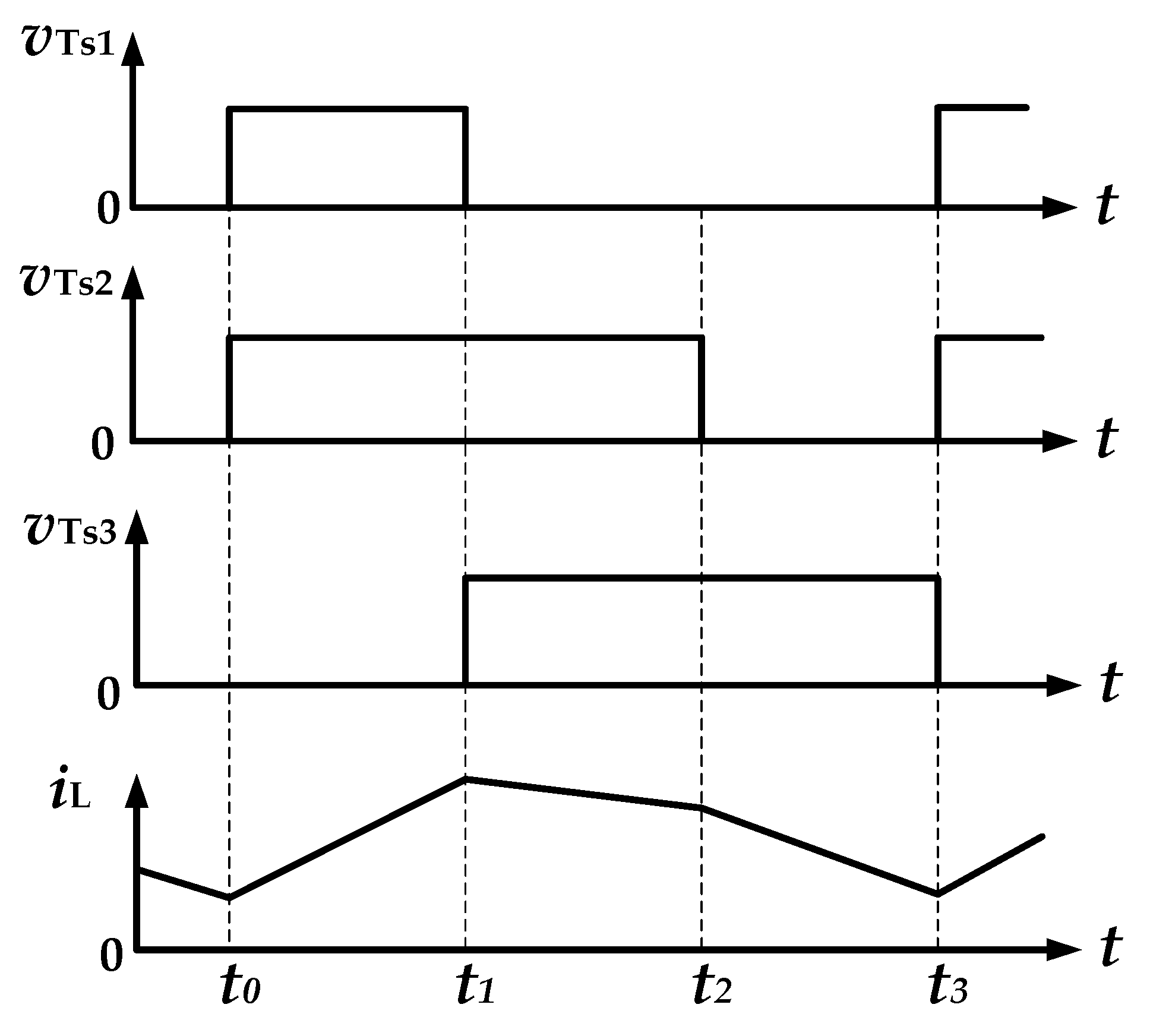
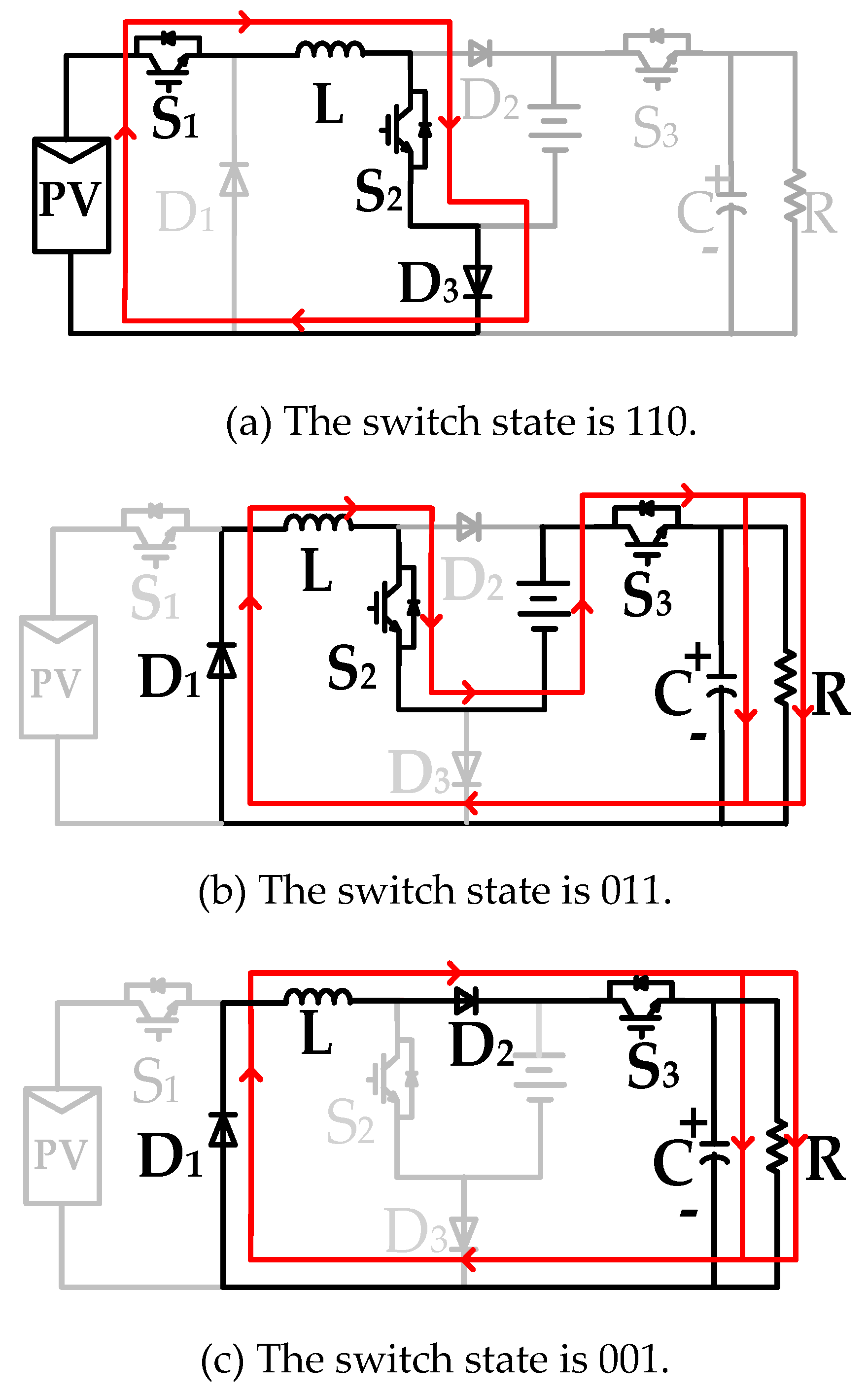

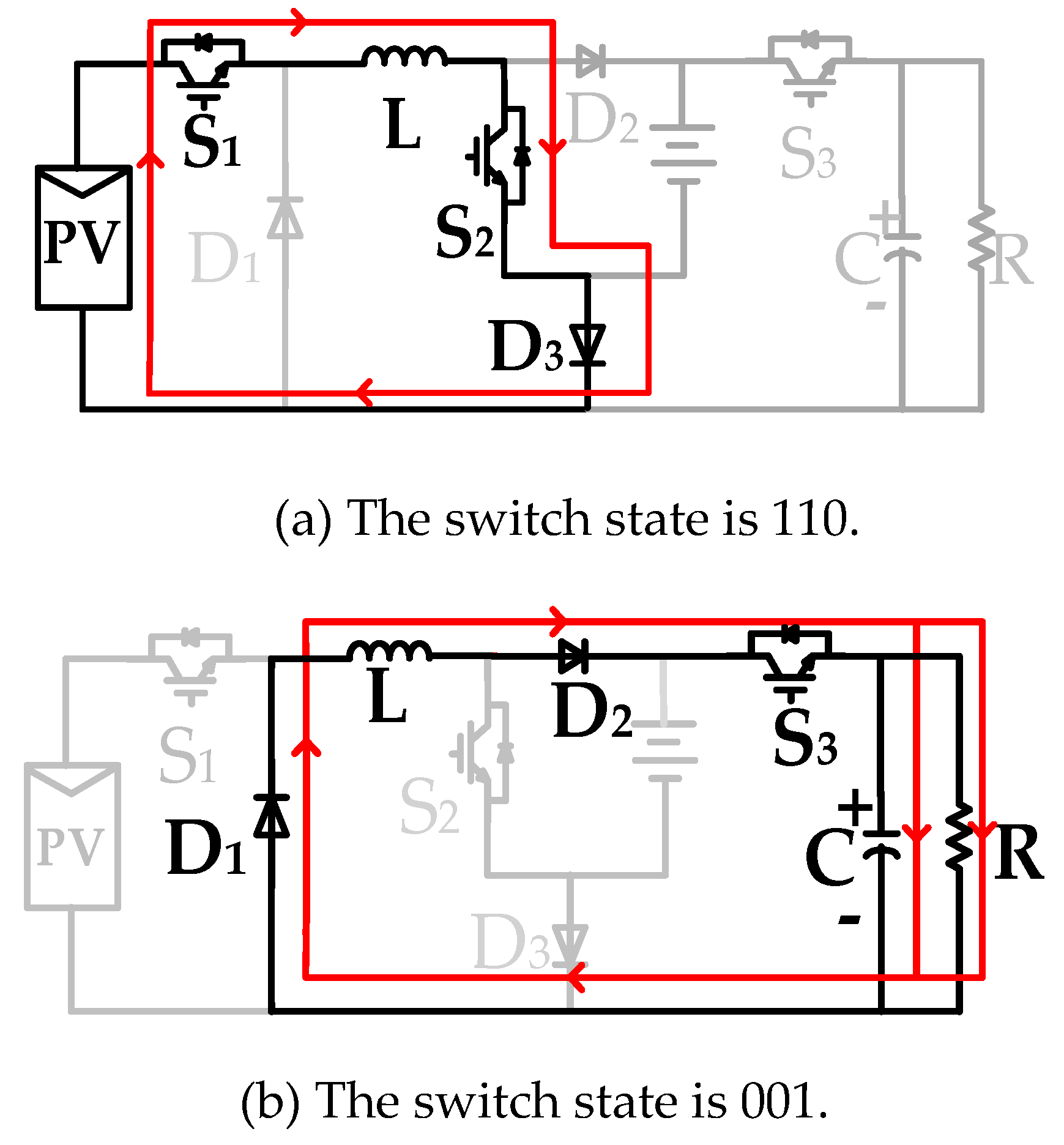
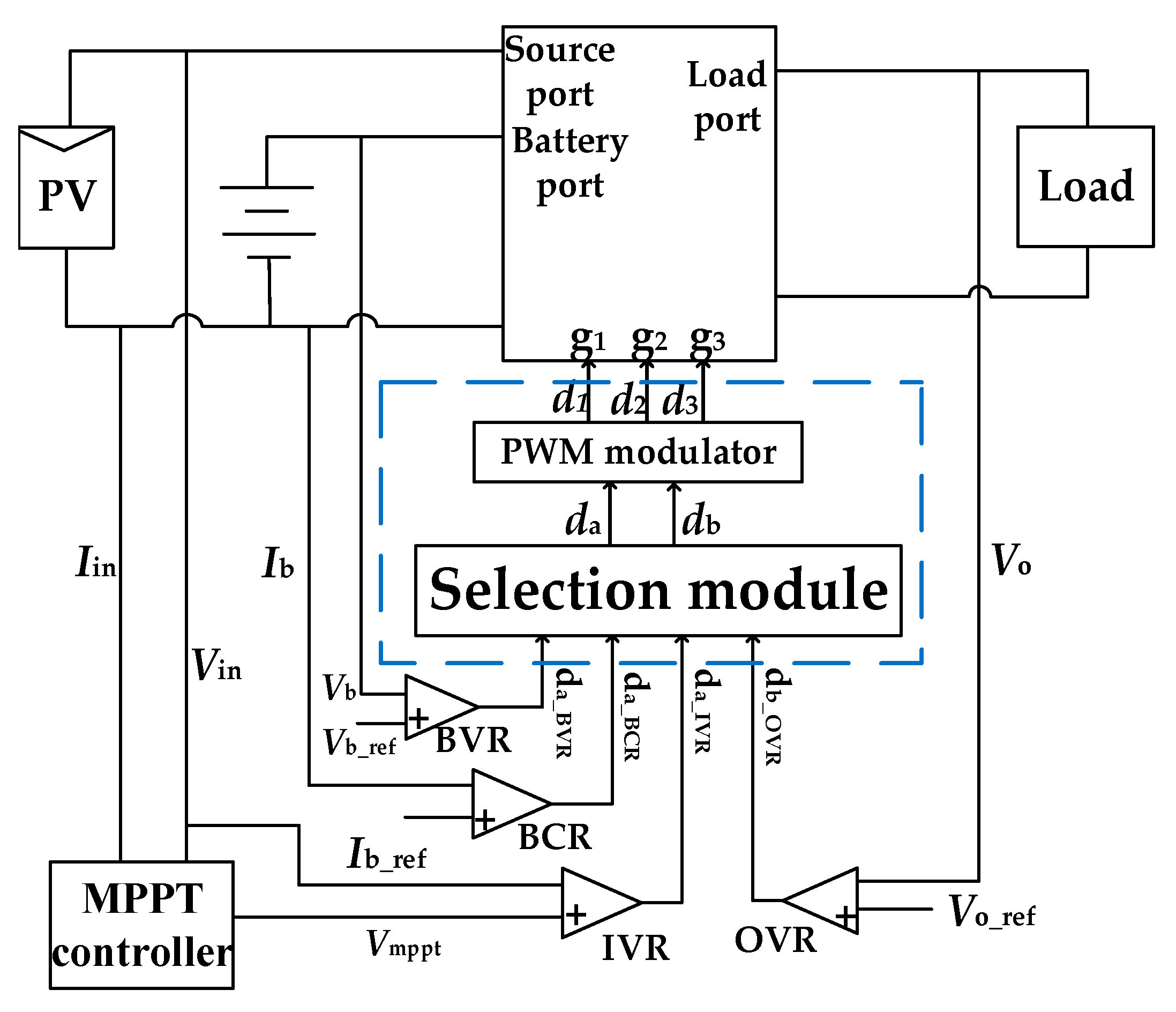
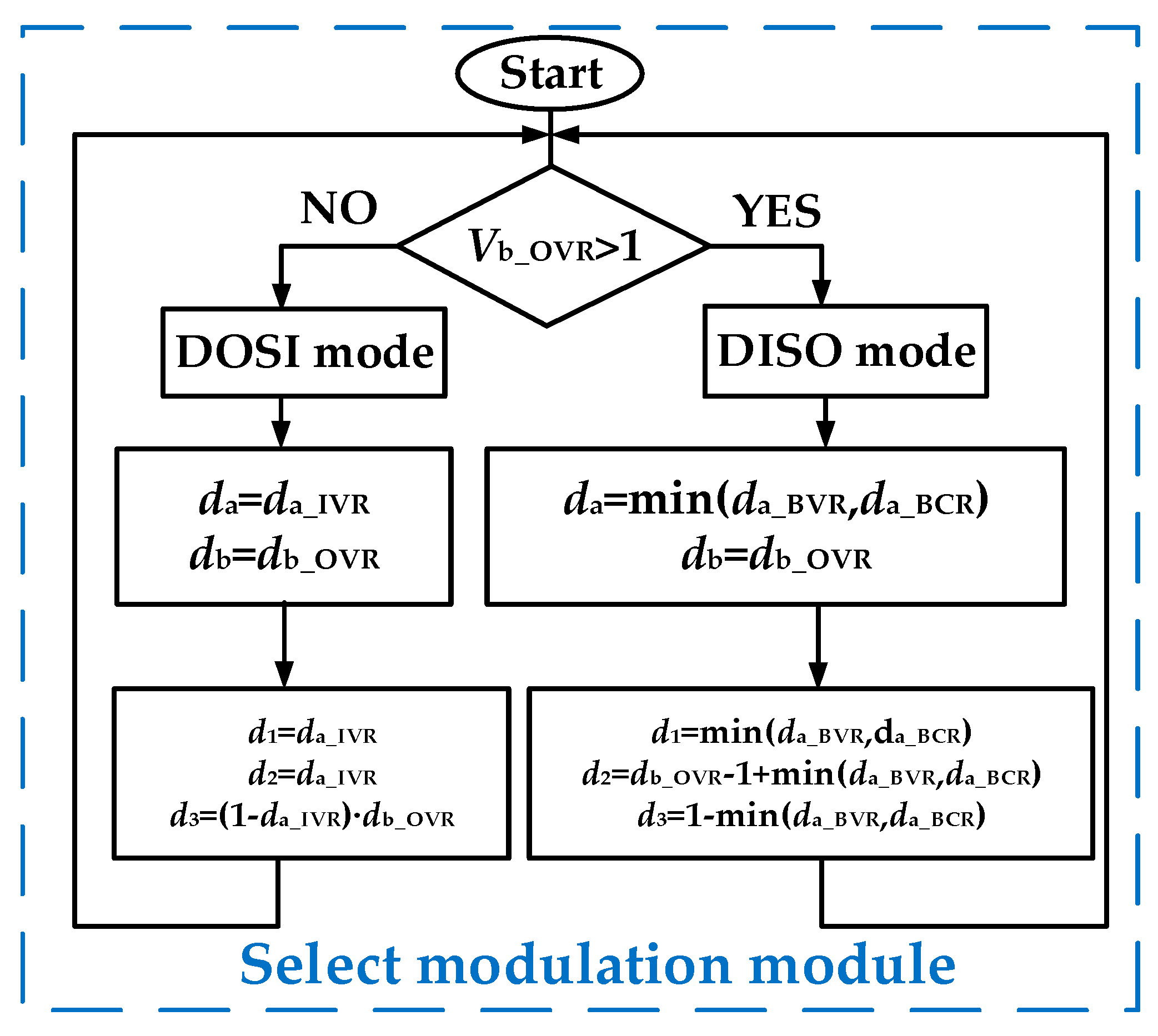
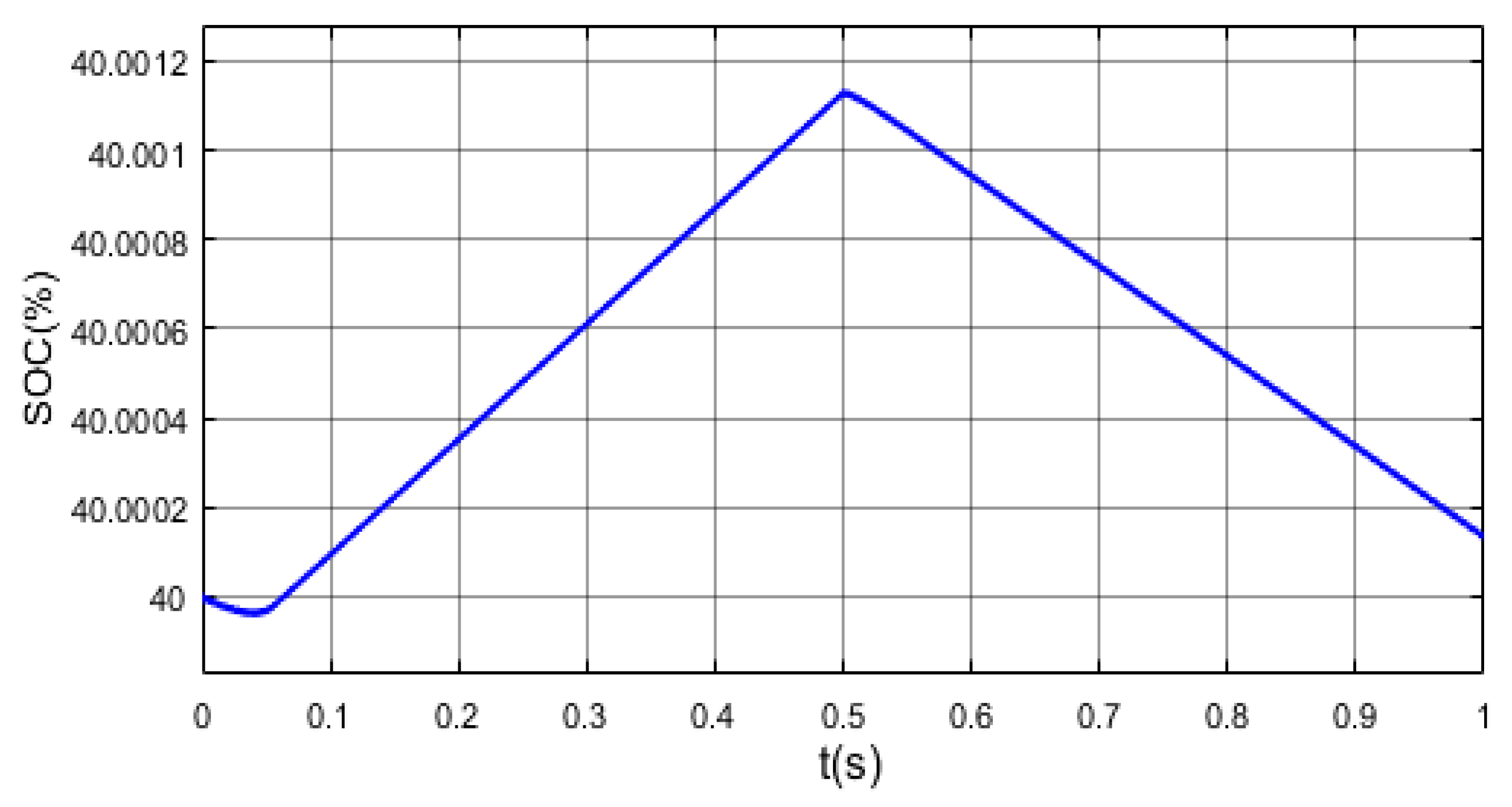
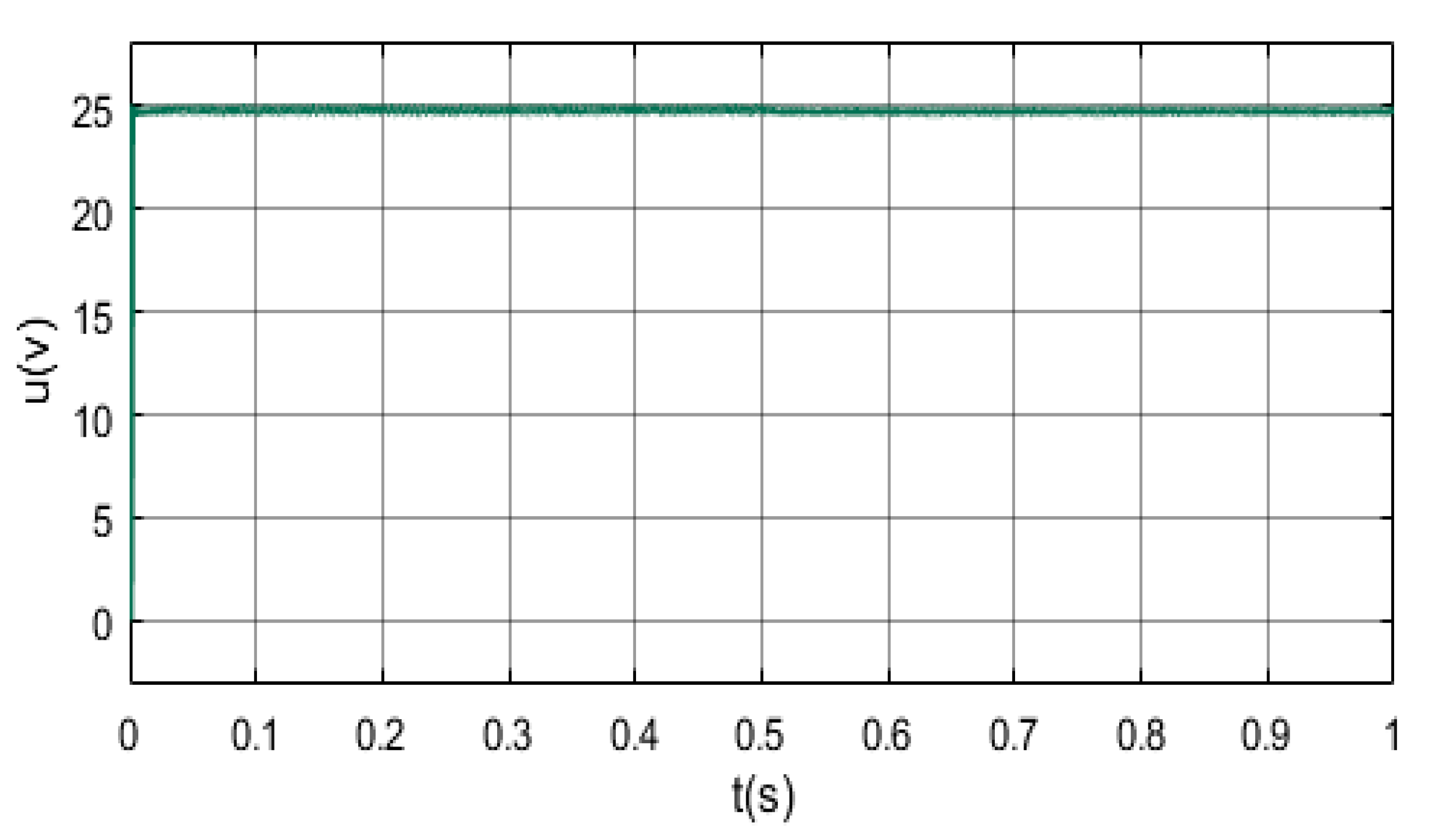
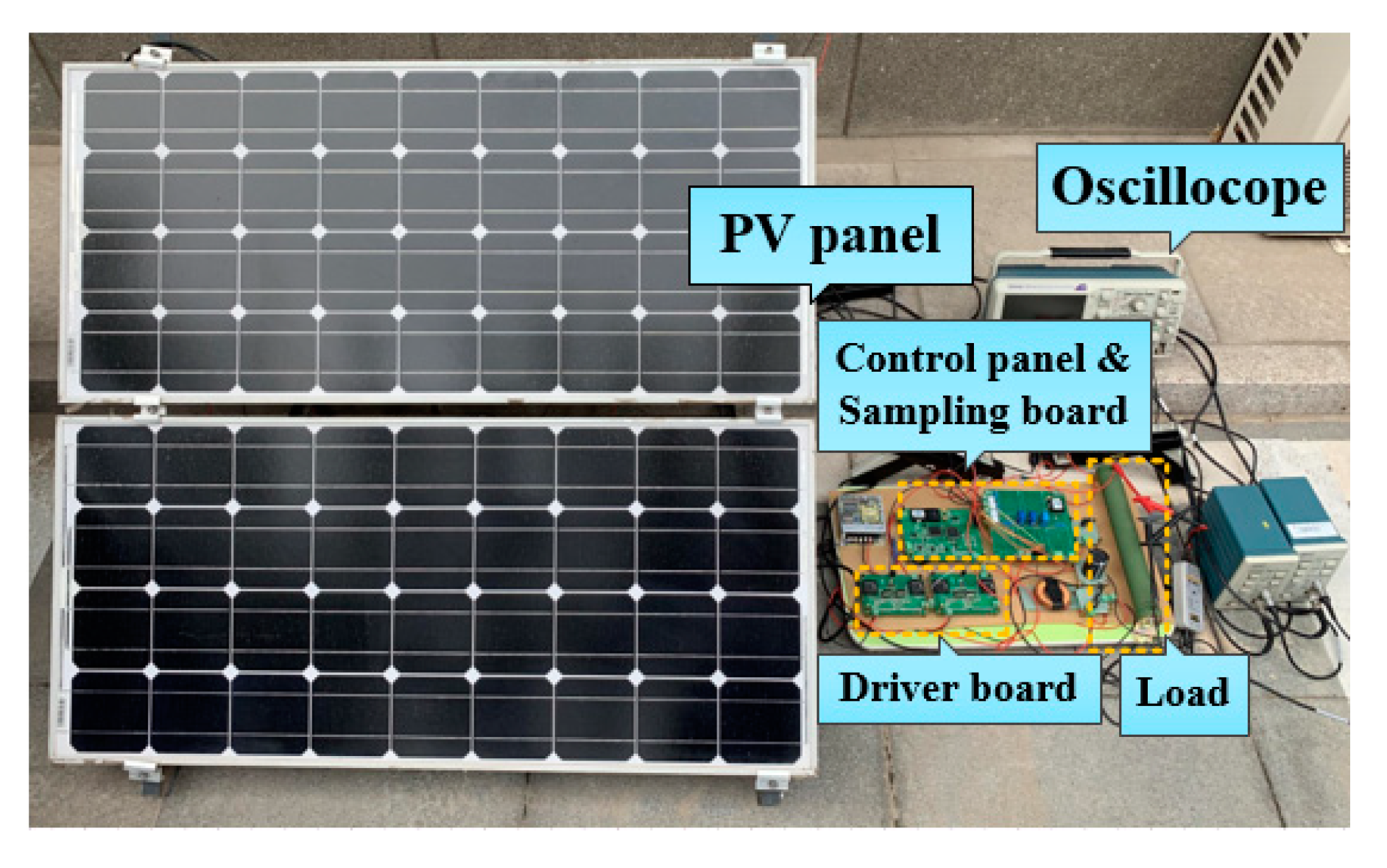
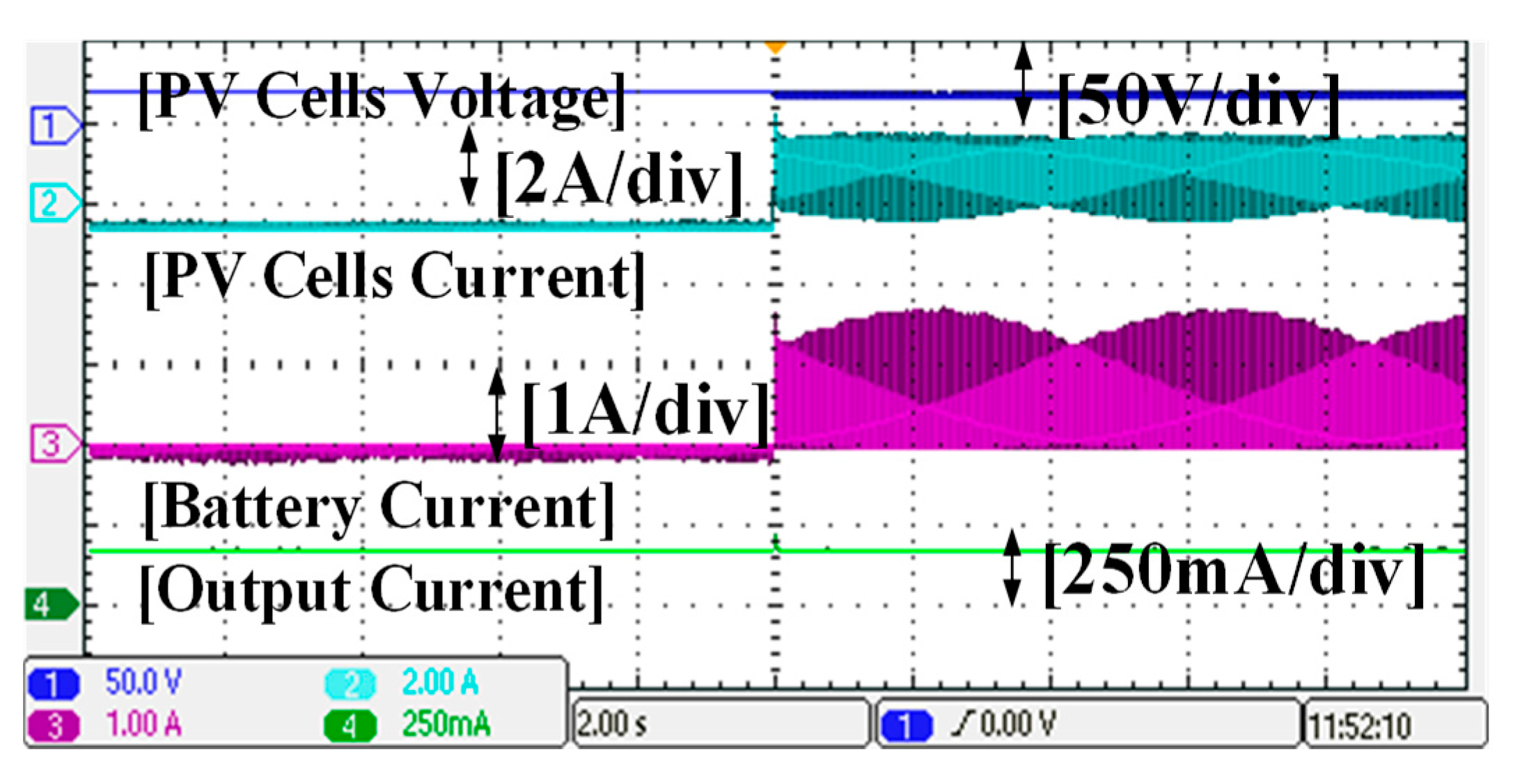
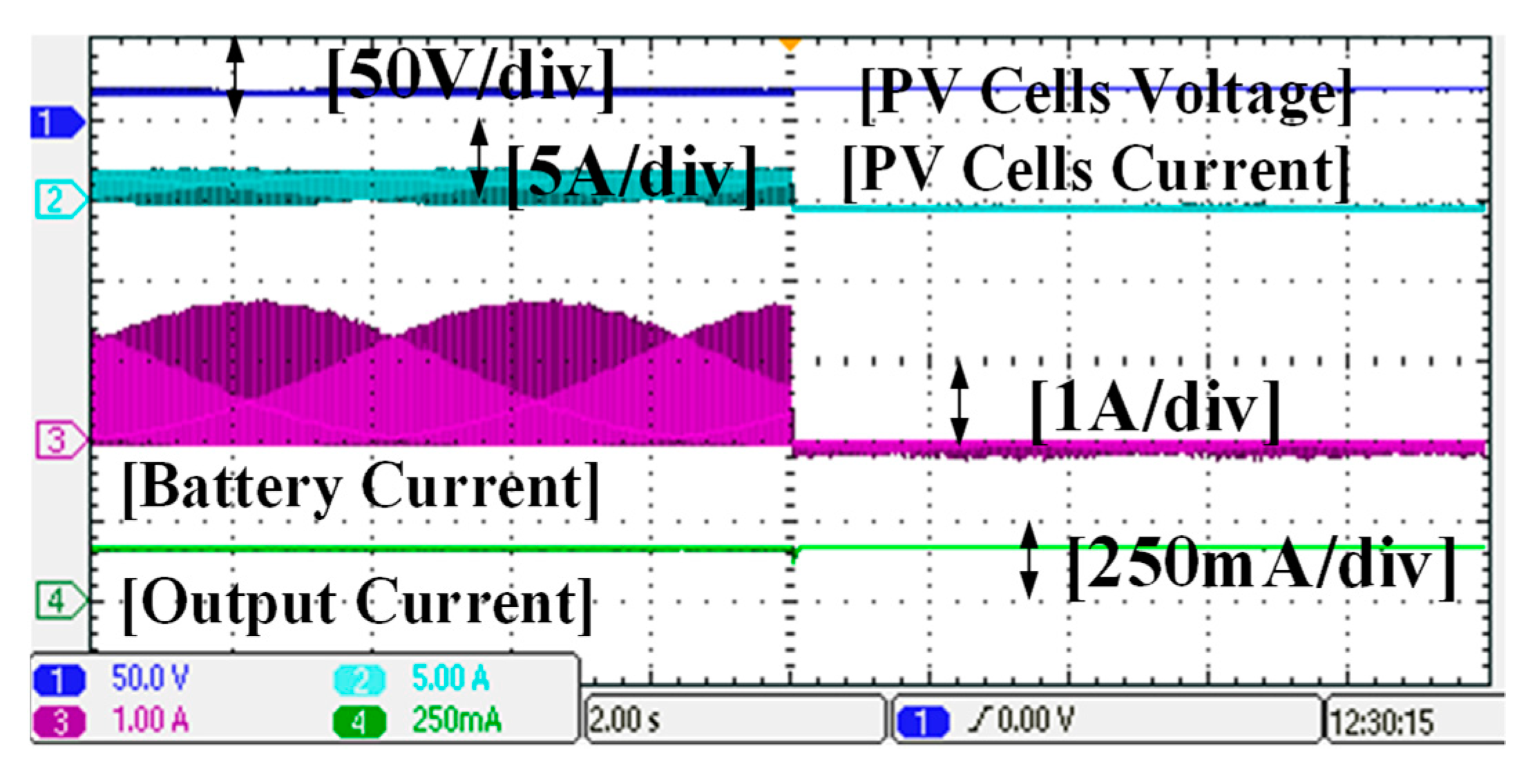

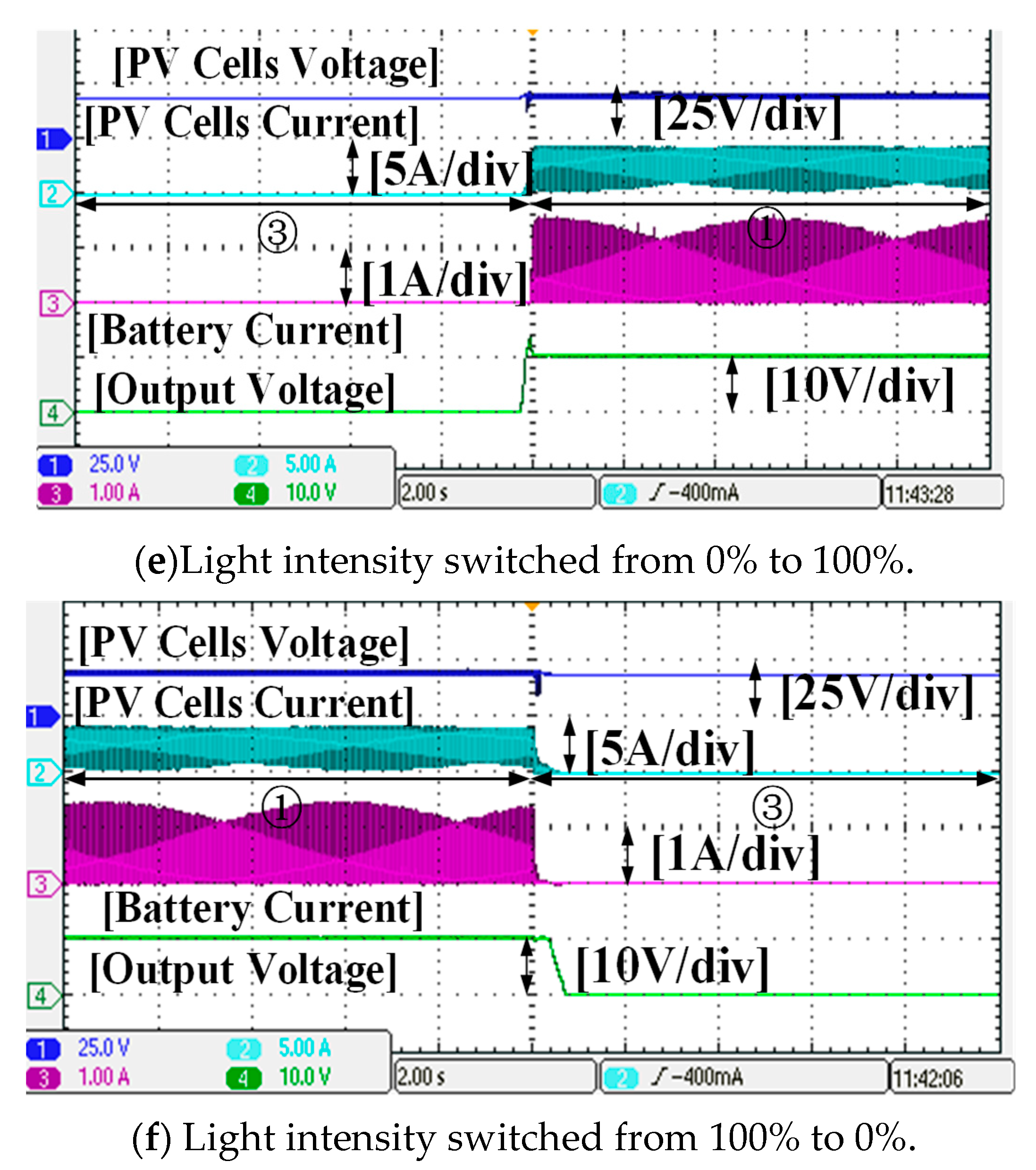
| a | b | c | d | e | f | g | h | |
|---|---|---|---|---|---|---|---|---|
| Switch status | 000 | 100 | 010 | 001 | 110 | 101 | 011 | 111 |
| Number of ports flowing through | 1 | 2 | 0 | 1 | 1 | 2 | 2 | 3 |
© 2019 by the authors. Licensee MDPI, Basel, Switzerland. This article is an open access article distributed under the terms and conditions of the Creative Commons Attribution (CC BY) license (http://creativecommons.org/licenses/by/4.0/).
Share and Cite
Liu, S.; Gao, Y.; Yang, L. Research on Application of Non-Isolated Three-Port Switching Boost Converter in Photovoltaic Power Generation System. Electronics 2019, 8, 746. https://doi.org/10.3390/electronics8070746
Liu S, Gao Y, Yang L. Research on Application of Non-Isolated Three-Port Switching Boost Converter in Photovoltaic Power Generation System. Electronics. 2019; 8(7):746. https://doi.org/10.3390/electronics8070746
Chicago/Turabian StyleLiu, Shuo, Ying Gao, and Liyong Yang. 2019. "Research on Application of Non-Isolated Three-Port Switching Boost Converter in Photovoltaic Power Generation System" Electronics 8, no. 7: 746. https://doi.org/10.3390/electronics8070746
APA StyleLiu, S., Gao, Y., & Yang, L. (2019). Research on Application of Non-Isolated Three-Port Switching Boost Converter in Photovoltaic Power Generation System. Electronics, 8(7), 746. https://doi.org/10.3390/electronics8070746





